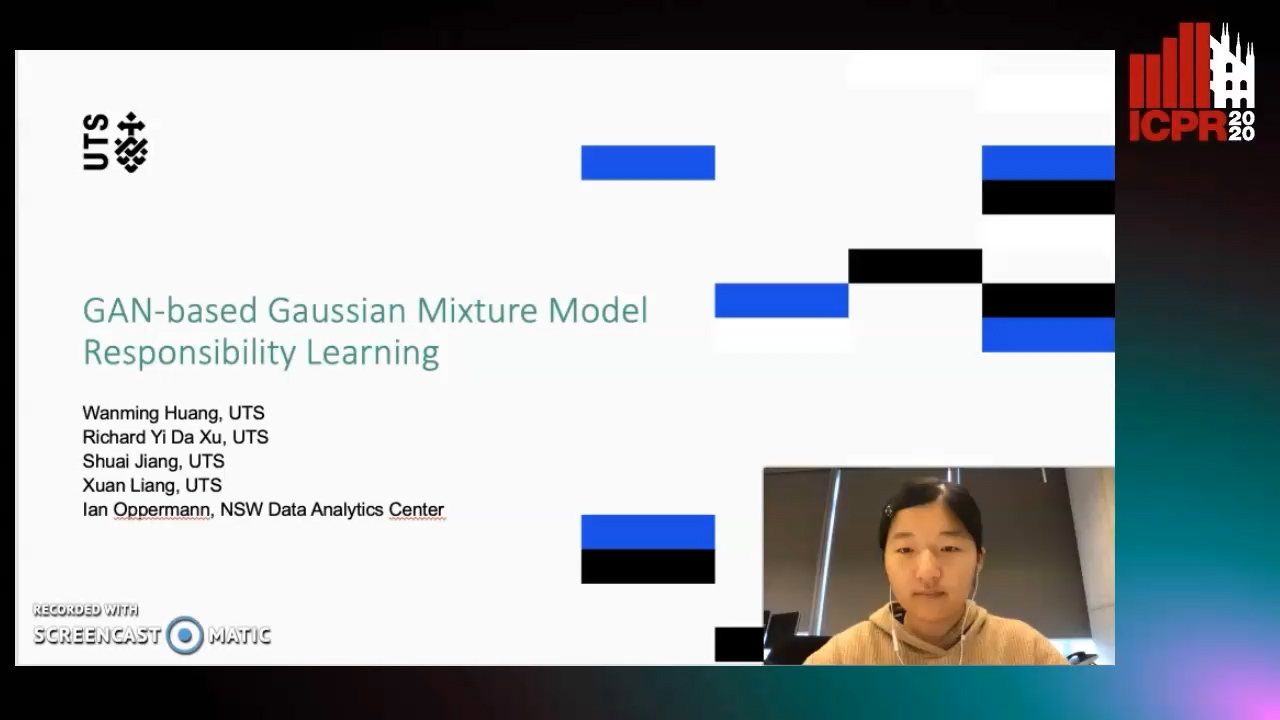Wanming Huang
Paper download is intended for registered attendees only, and is
subjected to the IEEE Copyright Policy. Any other use is strongly forbidden.
Papers from this author
GAN-Based Gaussian Mixture Model Responsibility Learning
Wanming Huang, Yi Da Xu, Shuai Jiang, Xuan Liang, Ian Oppermann

Auto-TLDR; Posterior Consistency Module for Gaussian Mixture Model
Abstract Slides Poster Similar
Mixture Model (MM) is a probabilistic framework allows us to define dataset containing $K$ different modes. When each of the modes is associated with a Gaussian distribution, we refer to it as Gaussian MM or GMM. Given a data point $x$, a GMM may assume the existence of a random index $k \in \{1, \dots , K \}$ identifying which Gaussian the particular data is associated with. In a traditional GMM paradigm, it is straightforward to compute in closed-form, the conditional likelihood $p(x |k, \theta)$ as well as the responsibility probability $p(k|x, \theta)$ describing the distribution weights for each data. Computing the responsibility allows us to retrieve many important statistics of the overall dataset, including the weights of each of the modes/clusters. Modern large data-sets are often containing multiple unlabelled modes, such as paintings dataset may contain several styles; fashion images containing several unlabelled categories. In its raw representation, the Euclidean distances between the data (e.g., images) do not allow them to form mixtures naturally, nor it's feasible to compute responsibility distribution analytically, making GMM unable to apply. In this paper, we utilize the Generative Adversarial Network (GAN) framework to achieve a plausible alternative method to compute these probabilities. The key insight is that we compute them at the data's latent space $z$ instead of $x$. However, this process of $z \rightarrow x$ is irreversible under GAN which renders the computation of responsibility $p(k|x, \theta)$ infeasible. Our paper proposed a novel method to solve it by using a so-called Posterior Consistency Module (PCM). PCM acts like a GAN, except its Generator $C_{\text{PCM}}$ does not output the data, but instead it outputs a distribution to approximate $p(k|x, \theta)$. The entire network is trained in an ``end-to-end'' fashion. Trough these techniques, it allows us to model the dataset of very complex structure using GMM and subsequently to discover interesting properties of an unsupervised dataset, including its segments, as well as generating new ``out-distribution" data by smooth linear interpolation across any combinations of the modes in a completely unsupervised manner.